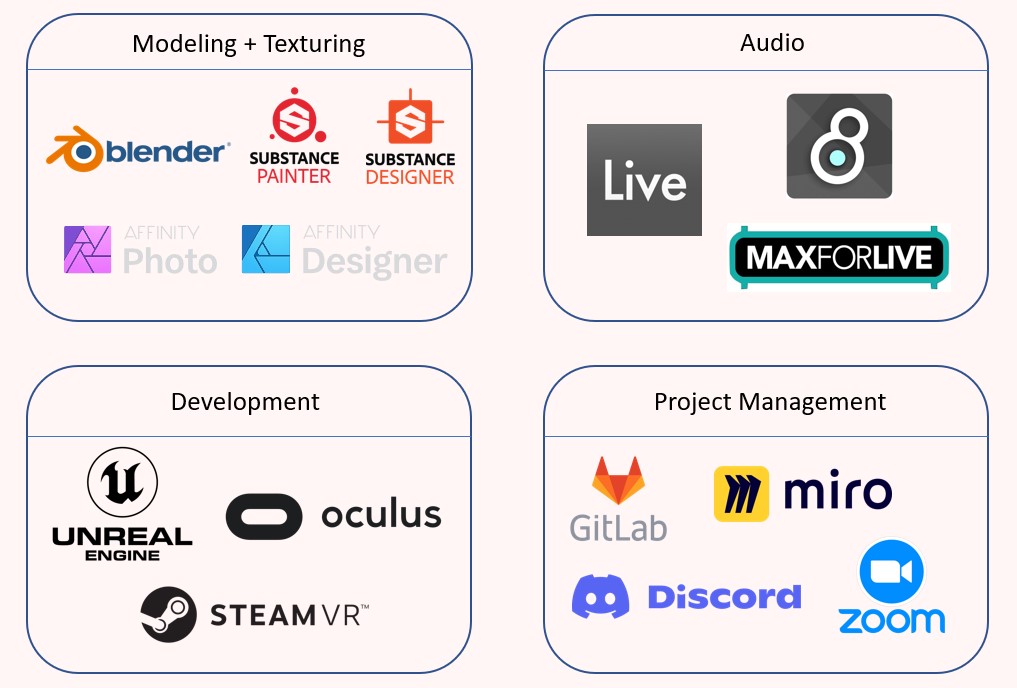- Unreal Engine 4
Unreal Engine 4 was our main tool.
We built our project and put all small parts together as one. - Oculus
We developed and tested our game with the Oculus Quest, we also used Oculus Link to link the Quest to the PC. - SteamVR
We were able to play Something Unreal on the Quest via an Unreal plugin using SteamVR.

Development
Hardware
- Oculus Quest
Three of us used the VR-Headset from Oculus, the Oculus Quest 1. - HTC Vive VR
The other two used the HTC Vive VR-Headset.
Modeling
- Blender
Blender is a 3D content creation software and was used to create almost all the assets for our project.
Texturing
- Affinity Photo & Affinity Designer
Affinity Photo was used for simple manipulation of textures whereas Affinity Designer was our tool of choice for creating graphical UI elements for the game. - Substance Designer
When it came to creating procedural textures for materials and postprocessing effects we went with Substance Designer. - Substance Painter
Substance Painter was essential in 3D texturing our custom-made assets.
Audio
- Ableton Live
Live was our main tool for composing the game score as well as creating the MIDI files that are used to drive rhythmic gameplay. - MaxMSP & Max4Live
We used Max to build a translation layer that would convert musical cues to usable gampeplay events. The tight integration of Max into Live via Max4Live made it easy to do quick iterations of the gameplay.
Communication
- Discord
We kept very close contact via Discord as a team and exchanged information almost daily via chat. - ZOOM
ZOOM was used for meetings with our supervisor Prof. Dr.-Ing. David Strippgen every two weeks. We discussed our current progress and talked about how to proceed.
Version Control
- HTW GitLab
We used the HTW GitLab as the version control system for our software project. Tasks and documentation were implemented with GitLab issues and the internal wiki respectively.
Other
- Miro
In Miro, we quickly shared our thoughts and discussed the design of our project and assets.